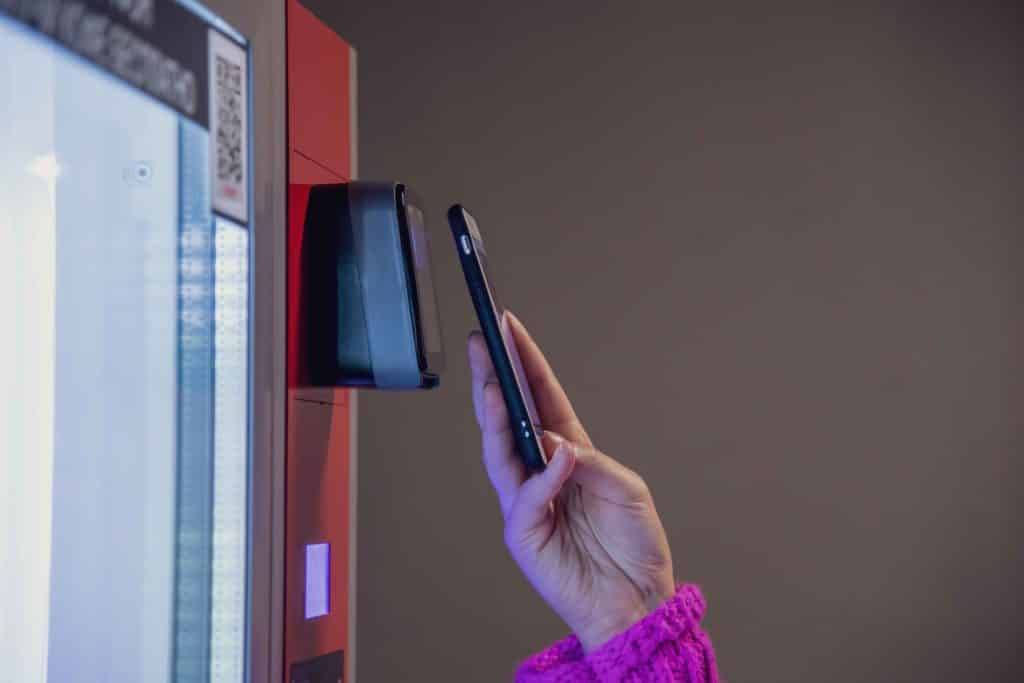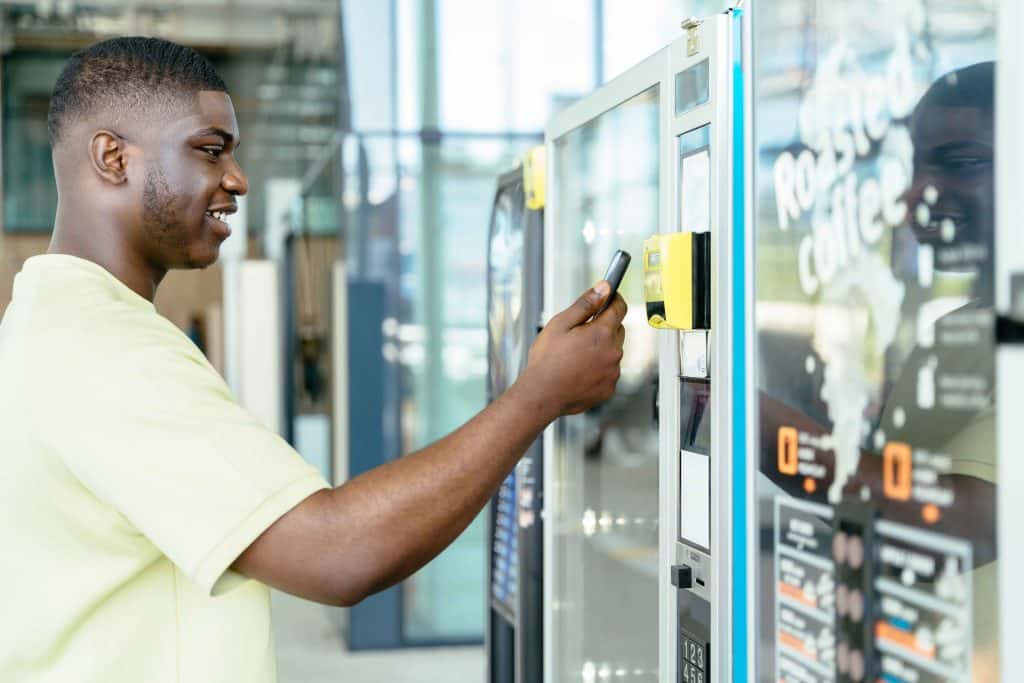Imagine the rhythmic hum of a vending machine, its interior lights reflecting off the glossy packaging of snacks and beverages. While it’s a commonplace sight in most public spaces, the financial investment behind these machines is a topic that isn’t frequently addressed. They’re wondering, “What’s the average cost?” The answer, however, isn’t quite straightforward. There’s a myriad of factors to consider – initial purchase, maintenance, restocking, and even the choice between traditional and smart vending solutions. Intrigued? Let’s explore this further.
Get Free Consultation
Key Takeaways
- Vending machine costs greatly depend on factors like type, size, capacity, and the level of technology incorporated in the machine.
- Smart vending machines, while costlier initially, offer advanced features and may reduce maintenance and operational costs in the long run.
- The price for vending machines can range from as low as $200 for used ones to as high as $10,000 for high-end new or smart machines.
- Operational costs, including restocking, utility expenses, and efficiency measures, are crucial considerations in determining the overall cost and profitability of a vending machine.
Read more about our Smart Vending Solutions!
Understanding Vending Machine Pricing
When it comes to understanding vending machine pricing, several factors come into play. The cost can vary greatly depending on whether one chooses a traditional or a smart vending machine. Additionally, pricing can differ significantly across different models.
Factors Influencing Cost
In the realm of vending machine pricing, several factors significantly affect the overall cost. The cost of a vending machine is influenced by whether it’s a traditional or smart vending machine, as the latter incorporates advanced vending machine technology and thus might cost more.
- Type of Machine: The average vending machine cost varies based on the type. Mobile vending machines or retail vending machines may have different prices.
- Size and Capacity: Larger machines with higher product capacity are generally more expensive.
- Technology: Smart vending machines, equipped with advanced capabilities, typically cost more than traditional ones.
- New vs Used: Used machines can be a cost-effective option but may have additional maintenance costs.
Knowing how much to buy a vending machine for involves considering these elements.

Comparison: Traditional vs. Smart Vending Machines
Let’s dive into a comparative analysis of traditional and smart vending machines to demystify their pricing structures. Traditional vending machines, often less expensive, are more straightforward, but may incur higher maintenance costs. Smart vending machines, on the other hand, come with advanced features like touch screens, increased security, and cashless transactions, but have a higher initial cost.
Here’s a table to help illustrate the key differences:
| Traditional Vending Machine | Smart Vending Machine | |
| Initial Cost | Lower | Higher |
| Maintenance Cost | Higher | Lower |
| Features | Basic | Advanced |
| Transaction Methods | Cash-based | Cashless |
While purchasing a vending machine, it’s important to consider these factors in conjunction with one’s budget and needs. Both options have their trade-offs, it’s about finding the right balance.
Price Range for Different Models
Breaking down the cost of different vending machine models can help prospective buyers gauge their investment better. Prices can vary significantly depending on the machine’s type, features, and size.
- Basic Snack Machines: The most affordable option, these machines typically cost between $2,000 to $3,000. They’re generally smaller and offer limited product choices.
- Full-Service Machines: These machines, providing a wider selection of snacks and drinks, can range from $3,000 to $6,000.
- Combo Machines: Offering both snacks and drinks, these versatile machines may cost between $2,500 and $5,000.
- Smart Machines: The most expensive, these high-tech machines can range from $6,000 up to $10,000, depending on the advanced features they offer.
These figures provide a starting point, but actual costs may vary based on specific model and supplier.
Initial Costs of Buying a Vending Machine
When considering the initial costs of buying a vending machine, there are several key factors to consider. The upfront investment is the first and usually the most significant cost. However, one shouldn’t overlook the installation and setup fees or the cost of additional equipment and accessories.
Upfront Investment
Diving into the initial costs, the upfront investment for a vending machine varies widely depending on factors such as the machine type, brand, and condition. A buyer must be prepared to spend anywhere from a few hundred to several thousand dollars.
To give a better understanding, here is a rough breakdown:
- Used Machines: Often the cheapest option, ranging from $200 to $600.
- Low-End New Machines: These could cost between $1000 to $3000.
- High-End New Machines: High-tech or specialized machines can run from $3000 to $10,000.
- Bulk Machines: For selling items like gumballs or small toys, these are typically priced between $50 to $200.
Installation and Setup Fees
Beyond the purchase price of the machine itself, buyers must also consider the costs associated with installation and setup. These fees can vary depending on the type, size, and location of the vending machine. Some vendors may include installation in the purchase price, while others charge separately. The cost could range from $100 to $600. Additionally, setup fees, often overlooked, include configuring the machine to dispense the right products at the correct prices. Software updates, establishing payment systems, and training for operation are part of this cost. Buyers shouldn’t underestimate these expenses as they can significantly affect the overall investment. It’s essential to get a clear breakdown of these costs from the vendor before the purchase.
Additional Equipment and Accessories
Along with the machine itself, you’ll also need to account for the cost of additional equipment and accessories that are critical for smooth operation. These extras can significantly impact your initial investment.
- Coin Mechanisms and Bill Validators: These devices process the payments from customers. The advanced ones can recognize and reject counterfeit money.
- Vending Machine Locks: To protect your investment from theft or vandalism, you’ll need high-quality locks.
- Product Dispensers: These vary based on the items you’re selling. For instance, snack machines require different dispensers than soda machines.
- Refrigeration Units: If you’re selling perishable items, these are a must.

Ongoing Operational Expenses
After understanding the initial costs of a vending machine, it’s crucial to consider the ongoing operational expenses. These costs include maintenance, inventory and stocking, and utility expenses. Each of these expenses plays a significant role in the overall cost of operating a vending machine and should be carefully considered when planning your vending machine business.
Maintenance Costs
Keeping a vending machine in tip-top shape involves several regular expenses that you can’t ignore. Maintenance costs are a critical part of running a vending machine venture, necessary to ensure the longevity and efficient functioning of the machines.
The primary maintenance costs include:
- Repair Costs: These are inevitable and can include fixing mechanical issues, replacing parts, or dealing with vandalism.
- Cleaning Costs: Regular cleaning is essential to maintain hygiene and the machine’s appearance.
- Electricity Costs: Vending machines, especially those refrigerating products, consume a significant amount of power.
- Software Updates: For digital vending machines, software updates and troubleshooting can also add to the maintenance costs.
It is crucial to factor these costs into the budget for a realistic view of potential profits.
Inventory and Stocking Costs
In addition to maintenance, filling up the vending machine with a variety of products represents another significant ongoing operational expense. These costs, referred to as inventory and stocking costs, take into account the price of goods and the frequency of restocking. The cost of the products varies greatly depending on the type of items sold. For instance, beverages and snacks are generally cheaper than electronics or luxury items. Frequent restocking increases the overall costs, but it’s necessary to keep machines well-stocked and attractive to customers. It’s also important to consider the potential waste of perishable items. Therefore, careful planning and management of inventory help to optimize profits and minimize waste. It’s a delicate balance that requires attention and expertise.
Utility Expenses
Utility expenses, including electricity and water, also factor significantly into the ongoing operational costs of a vending machine. The costs can fluctuate based on factors such as location, usage, and the type of products sold.
To further illustrate, consider these four points:
- Electricity: The machine’s power consumption depends on its size, technology, and usage. Larger machines or ones with refrigeration units will naturally consume more electricity.
- Water: If the vending machine dispenses drinks or food items that require water, this will increase the utility costs.
- Location: In areas where utility rates are higher, operational costs will also rise.
- Usage: Machines that vend more items or are used more frequently will naturally require more power, thus increasing utility expenses.
Cost-Efficiency of Smart Vending Solutions
Smart vending solutions offer a myriad of benefits, including a favorable return on investment. Automating operations leads to substantial cost reductions, strengthening the case for a shift towards smart vending. Furthermore, integrating these machines with mobile technology enhances their efficiency and convenience for users.
ROI of Smart Vending Machines
Examining the return on investment (ROI) reveals how cost-efficient smart vending solutions can significantly boost profits. These modern machines have tech-savvy features that not only attract more customers but also enhance operational efficiency.
To better understand this, consider the following four factors that contribute to a smart vending machine’s ROI:
- Increased Sales: Interactive displays and diverse payment options can drive up sales.
- Reduced Downtime: Real-time inventory tracking ensures the machine is always stocked, preventing lost sales opportunities.
- Enhanced Customer Experience: User-friendly interfaces and the ability to vend a wider variety of products keep customers satisfied.
- Detailed Analytics: Data collected from smart vending machines can help operators make informed business decisions, improving overall profitability.
Reducing Operational Costs with Automation
Harnessing the power of automation can dramatically cut operational costs for vending machine businesses, enhancing their cost-efficiency. Automated vending machines require fewer human interventions, thus reducing labor costs. Moreover, they provide real-time inventory tracking, decreasing losses from stock-outs or overstocking.
Here’s a brief comparison of the costs associated with traditional and automated vending machines:
| Type of Cost | Traditional Vending Machines | Automated Vending Machines |
| Labor Cost | High | Low |
| Inventory Management Cost | High | Low |
| Maintenance Cost | High | Variable |
With these potential savings, it’s no surprise that many businesses are transitioning to automated vending solutions. However, it’s essential to consider the initial investment and potential maintenance costs. These factors will impact the overall cost-efficiency of your vending machine business.
Benefits of Mobile Integration
Integrating mobile technology into vending operations can significantly boost cost-efficiency, providing tangible benefits such as streamlined transactions, enhanced customer experience, and improved inventory management. The use of mobile integration notably optimizes the whole vending process, from purchase to product delivery.
Four key benefits can be highlighted:
- Streamlined Transactions: Mobile payments eliminate the need for physical cash, speeding up transactions and reducing machine maintenance.
- Enhanced Customer Experience: Mobile apps offer interactive interfaces, allowing customers to easily select, pay for, and rate their purchases.
- Improved Inventory Management: Real-time data feeds track inventory levels, helping vendors restock efficiently and avoid sell-outs.
- Reduced Operational Costs: By automating tasks, mobile integration can significantly cut down on labor and maintenance costs, making smart vending a cost-effective solution.

Financial Planning and Budgeting for Vending Machine Investment
Investing in a vending machine requires careful financial planning and budgeting. It’s crucial to consider the initial purchase budget, explore various financing options, and accurately calculate the break-even point. This stage of preparation can determine the success or failure of the vending machine venture.
Budgeting for Your Vending Machine Purchase
When planning to invest in a vending machine, it’s crucial to consider the average cost and budget accordingly. It’s more than just the initial purchase; there are several factors to consider.
- Initial Purchase Cost: This can range from $3,000 to $10,000 depending on the machine type, quality, and features.
- Maintenance and Repairs: These are ongoing costs that can add up over time. It’s important to budget for routine maintenance as well as unexpected repairs.
- Stock Inventory: You’ll need to regularly replenish your vending machine with products. The cost of these items should be factored into your budget.
- Operational Expenses: These include electricity and potential rental fees for the machine’s location.
Financing Options
Having considered the costs associated with owning a vending machine, it’s time to explore various financing options that can help manage these expenses effectively. The three main options include self-financing, bank loans, and leasing.
Self-financing is when the buyer uses their own funds, while bank loans involve borrowing money from a financial institution. Leasing, on the other hand, allows the buyer to rent the vending machine for a certain period, typically with the option to buy at the end of the lease.
| Financing Option | Pros | Cons |
| Self-Financing | Full control, no interest | High initial outlay |
| Bank Loans | Lower upfront costs, builds credit | Interest, potential for debt |
| Leasing | Lower upfront costs, flexible | Ongoing payments, potential for higher overall cost |
Choosing the right option depends on one’s financial situation and business goals.
Protect your vending technology from cyber threats. Read more!
Analyzing the Break-even Point
Understanding the break-even point is crucial for any vending machine investment, as it helps determine when your venture will start generating profits. It’s the point where total revenue equals total costs, indicating that the business is neither making nor losing money.
To calculate this, you should:
- Determine your fixed costs: These are the costs that won’t change regardless of how many items you sell, such as the purchase price of the vending machine.
- Calculate your variable costs: These costs change depending on your sales volume, like inventory or maintenance costs.
- Understand your contribution margin: This is the selling price of your product minus the variable cost per unit.
- Divide your fixed costs by the contribution margin: This will give you your break-even point in units sold.
Conclusion
In wrapping up, investing in a vending machine isn’t just a walk in the park. It’s a dance with financial particulars, twirling around initial acquisition costs and ongoing operational expenses. Yet, with smart vending solutions, the rhythm becomes more cost-efficient. Proper planning and budgeting can turn this dance into a profitable waltz. So, don’t shy away from the dance floor, embrace the tune of vending machine investment.
Vending Solutions
With our smart vending solutions, grab-and-go shopping gets simpler, faster, and more personalized.
Frequently Asked Questions
What Are the Legal Considerations When Installing a Vending Machine?
When installing a vending machine, one must consider legal aspects. They’ll need to check local zoning laws, health department regulations, and ensure they’ve proper business licenses. Additionally, they must adhere to the Americans with Disabilities Act.
How Can I Better Market My Vending Machine to Increase Sales?
To better market their vending machine and boost sales, they’ll need to position it in high-traffic areas. They should also consider offering popular, in-demand items and promoting it with clear, attractive signage.
How Do I Choose the Right Products to Stock in My Vending Machine?
Choosing the right products for a vending machine depends on the target demographic. They’d study the location, consumer habits, and popular trends. It’s essential they stock items that’ll sell and meet customer needs.
What Are the Maintenance Requirements for Different Types of Vending Machines?
Like cars needing regular tune-ups, different vending machines have varying maintenance needs. They’ll generally require routine cleaning, restocking, and technical checks to ensure they’re running smoothly and efficiently. Specific requirements depend on the machine’s type and usage.
Can Vending Machines Be Franchised and How Does This Affect the Cost?
Yes, one can franchise vending machines, but it’ll affect the cost. Franchising often includes equipment, product supply, and support costs. It’s typically more expensive, but it offers a turnkey business and ongoing assistance.

